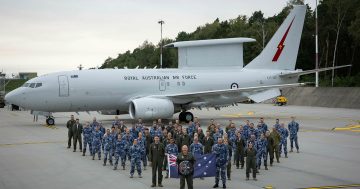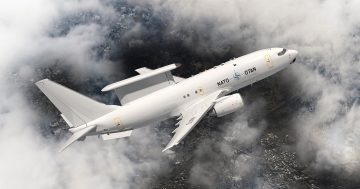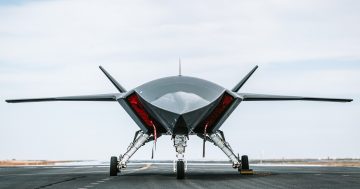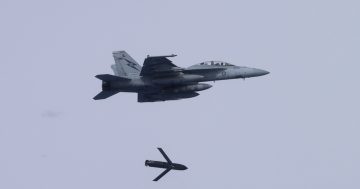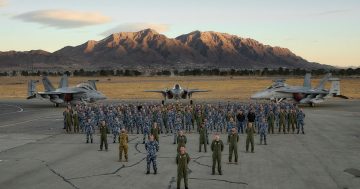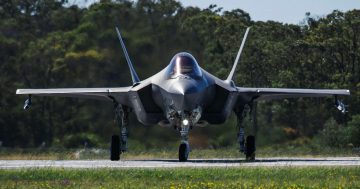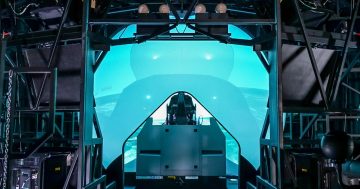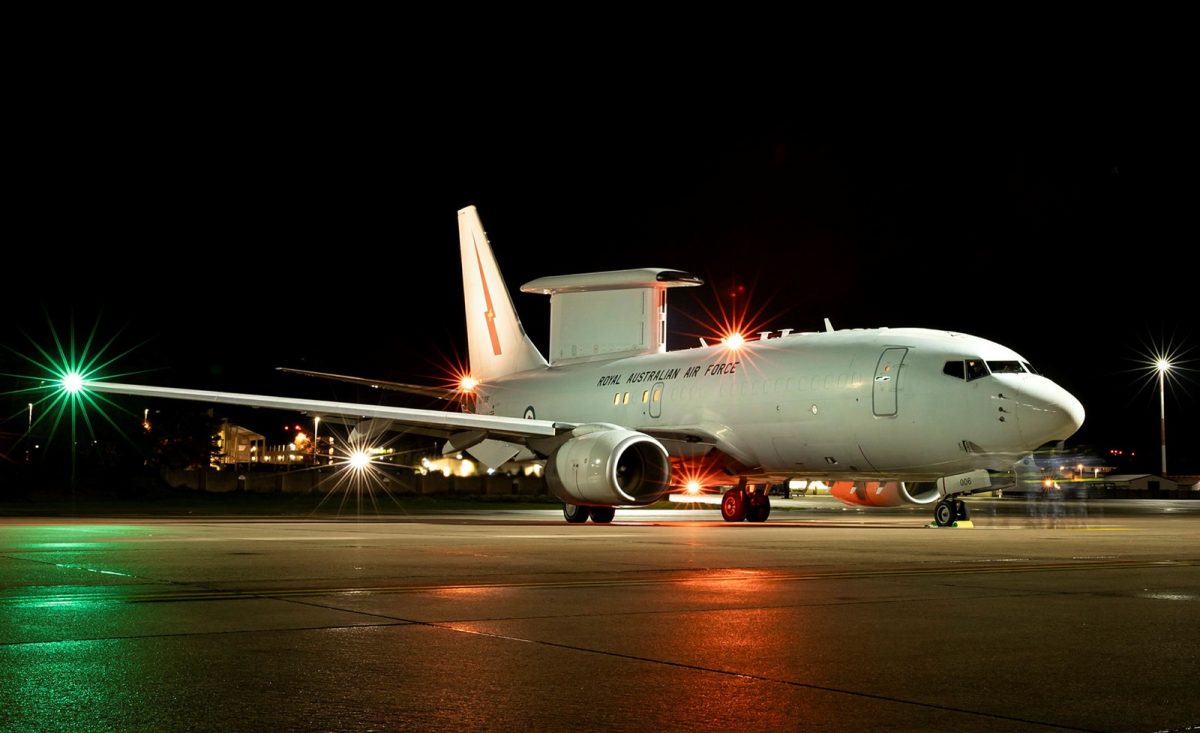
An RAAF E-7A Wedgetail on the ramp at Ramstein Air Base in Germany. Photos: ADF.
The deployment of a Royal Australian Air Force E-7A Wedgetail airborne early warning and control (AEW&C) aircraft to Europe for Operation Kudu has ended.
The aircraft deployed in mid-2023 to provide airborne command and control and airspace monitoring for the large number of military and chartered commercial aircraft flying in and out of eastern Poland with aid destined for Ukraine, as well as other areas surrounding Ukraine’s extensive border regions.
The E-7A is a modified Boeing 737-700IGW commercial aircraft, which features a distinctive ”surfboard”-style, 360-degree electronically scanned array radar on its upper rear fuselage.
The E-7A is considered to be the most capable AEW&C aircraft in service anywhere in the world, and can ”see” deep into Ukrainian, Belarussian and Russian airspace using its powerful radar and electronic support measures (ESM).
These systems can identify and track aircraft, drones and cruise missiles from well over 300 kilometres away – long before other systems can – and share that data in real time with other airborne, ground-based and maritime systems.
The E-7A is also fitted with airborne missile self-defence systems, and its interior features console operator stations where the radar, ESM, datalinks and other systems can be monitored, as well as a small galley and a crew-rest area.
The Wedgetail likely operated in rotation with other NATO AEW&C aircraft such as the E-3A/G AWACS operated by the US, France, and a joint NATO force based in Germany, France and the Netherlands respectively; Turkish E-7Ts; and several smaller specialised ground-surveillance aircraft.
The E-7A was based at Ramstein Air Base in Germany and in total flew about 250 hours during the deployment, with an average mission length of about five hours. Up to 100 ADF personnel including aircrew, air battle managers, combat controllers, intelligence officers and maintenance personnel were deployed to Ramstein in two waves to support the deployment.
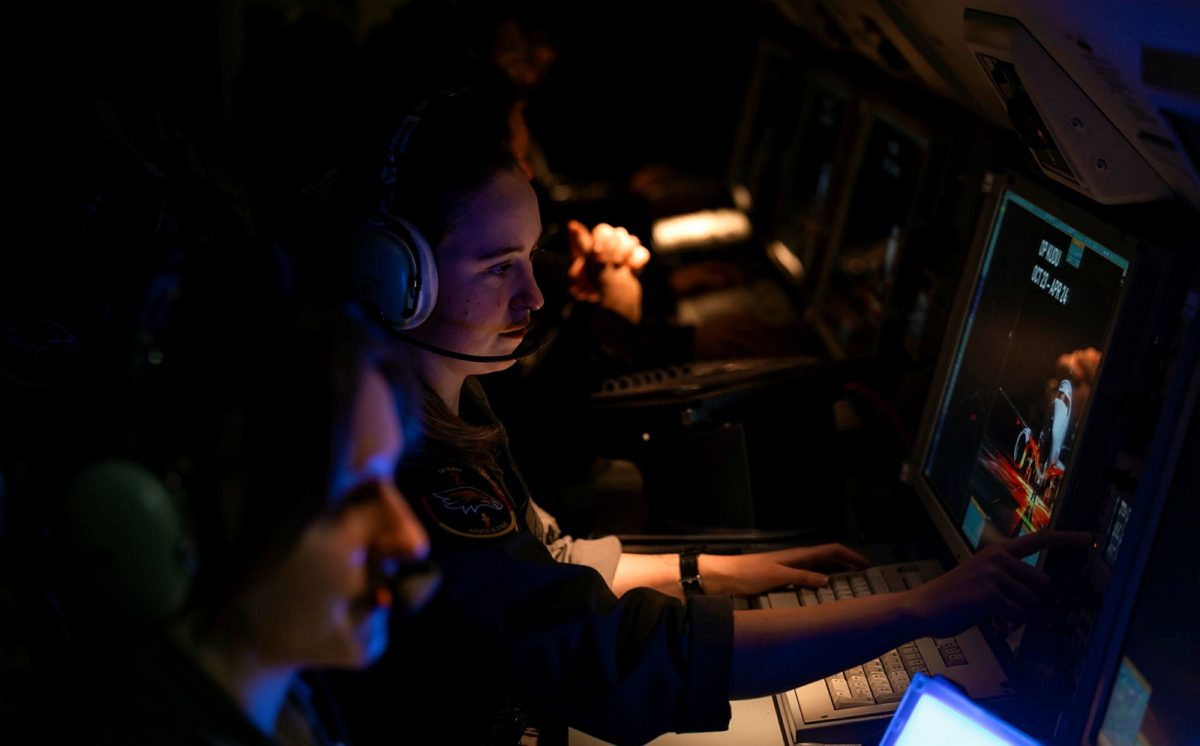
RAAF E-7A Wedgetail console operators monitoring the aircraft’s advanced radar, ESM and communications systems.
Apart from the E-7A deployment, Operation Kudu is also the ADF’s commitment to the training of armed forces of Ukraine recruits in the UK.
Australian instructors are working alongside partner nations as part of the UK-led training program to train Ukrainian soldiers in basic infantry tactics for urban and wooded environments and to help build additional capacity for Ukraine to defend its homeland.
Chief of Joint Operations Lieutenant General Greg Bilton visited Ramstein Air Base in mid-March and applauded the ADF personnel’s work supporting the protection of a vital gateway of international humanitarian and military assistance into Ukraine.
“Your deployment and your work here has been welcomed and commented on at the highest levels during my visit to Europe. You have built a strong reputation within NATO that I’m sure that they’ll want to see more of the platform,” he told the contingent.
“The deployment was a tangible demonstration of Australia’s commitment to supporting our partners in upholding the global rules-based order.”
Commander of the Task Element Wing Commander Darrin Lindsay said the mission success rate was equal to similar missions in Iraq and Syria.
“I’m really proud of what the crew has been able to achieve, and to hear [Lieutenant General Bilton] say that he’d been receiving praise and heightened interest in the superior capabilities of Australia’s E-7A Wedgetail while he’s been visiting Europe is really pleasing,” he said.
“It is a testament to how well the team have come together that the reputation of the E-7A Wedgetail has flourished across Europe.
“Through ingenuity and initiative, the team has overcome the initial integration challenges that occur as we began operations, as a non-NATO partner within NATO airspace.
“We have been working closely with the US and NATO partners, particularly as we provide critical support to the force protection of the flow of equipment and logistics capabilities through Poland into Ukraine.
“We can take home a lot of good lessons regarding integrating with new nations. Initially, it presents challenges but then similarities appear and integration can occur. Whether it’s maintenance workforce or aircrew, we are all taking home lessons learned.”
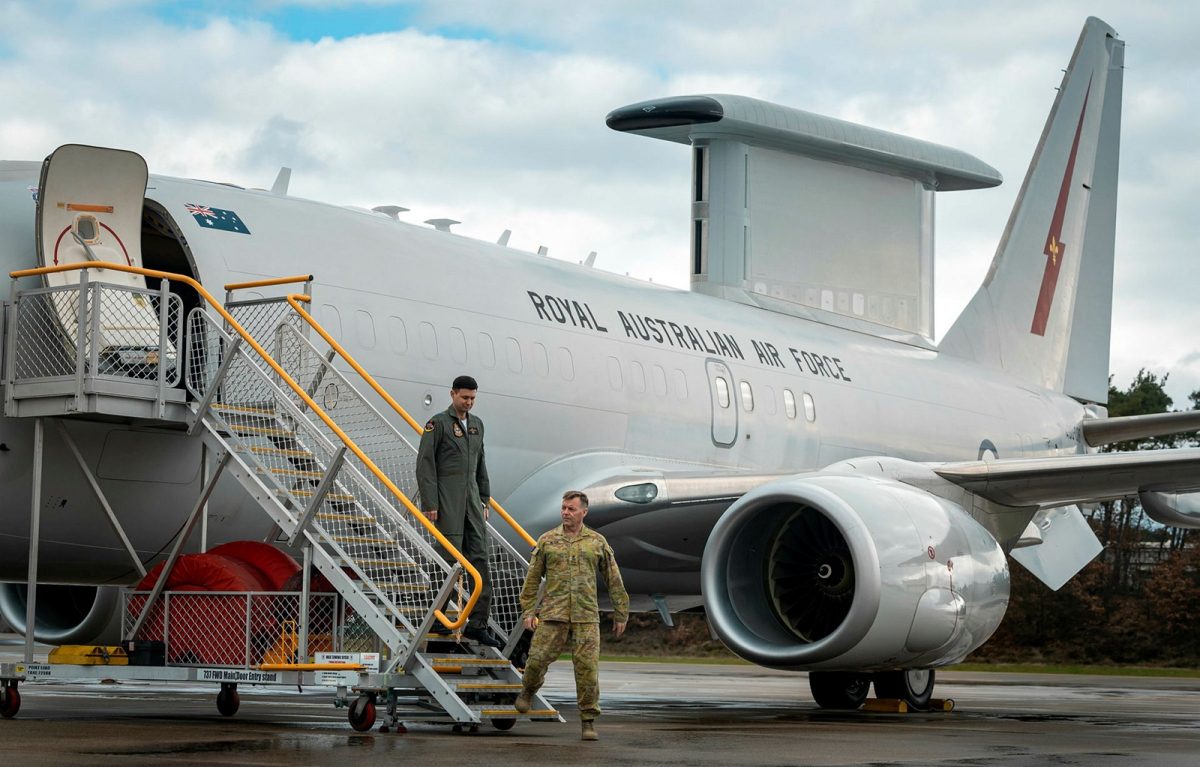
Commander of the Task Element Wing Commander Darrin Lindsay (left) and Chief of Joint Operations LTGEN Greg Bilton during the General’s March visit to Ramstein Air Base.
Chief of Air Force Air Marshal Robert Chipman said the E-7A Wedgetail was one of the most advanced airborne early warning systems in the world and was well suited to the task of providing support to the vital gateway.
“I commend our people on their hard work and commitment, channelling our ethos of being a ready, resilient and resourceful force,” he said.
“I wish all our returning personnel a safe journey home and an enjoyable time reconnecting with family and friends.”
The RAAF acquired six Wedgetails in the early 2000s as part of Project AIR 5077, and these are operated by No. 2 Squadron based at Williamtown near Newcastle. South Korea and Turkey operate versions of the E-7, while the US and UK have also ordered the aircraft.


